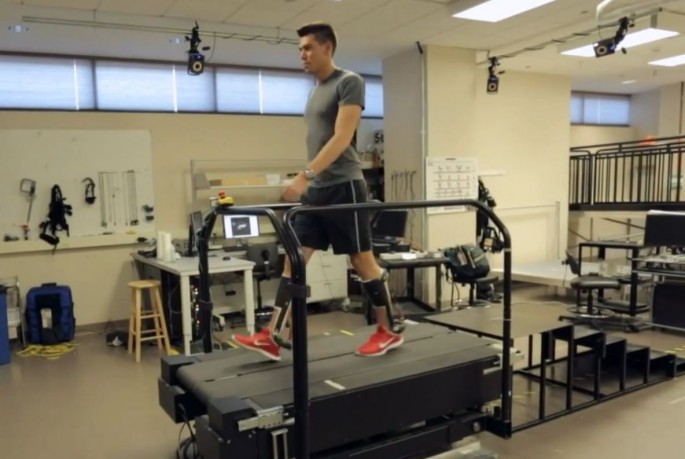A new device called Mechanical Exoskeleton has been introduced to help reduce the energy cost of walking.
Mechanical Exoskeleton is an accessory for the legs, a device that works on a clutch and a spring mechanism. It absorbs the energy that is transferred when your feet make contact with the ground and releases it after the step has been taken. It saves expended energy while walking.
This Exoskeleton marks a new phase in technology assisted human movement. Instead of using battery operated devices whose price tags extend into the league of multiple zeros, there is a simple, cost saving method to ensure that walking is up to 7 percent more efficient, as published on Nature.
Author Steven Collins said, "This device is lightweight and simple with no batteries or motor. Instead of costing between $40,000 and $80,000, it could cost just a few hundred dollars. People who find it difficult to walk because ageing or strokes could benefit."
Currently being tested for practical use, some of the applications of this exoskeleton device could be in terms of rehabilitation of individuals who have been in an accident, or of use to individuals who are differently abled.
This device, with a processor to assess speed, could also be used by all runners, in the near future. The theory of the device could be used as the basis to develop further such mechanical models that enable energy saving, with respect to other parts of the body.
However, the question that arises is if such a device could have a negative effect on public health? There has been a rise in obesity levels in recent times, and reducing the amount of energy expended merely enables the issue, Gregory Sawicki, co-author of the paper suggests that it could have a positive impact as well.
"For a 65-year-old active person, it could really prolong their active years," Sawicki said.
A device that helps save energy and makes walking more efficient could serve as a prototype for the future. Devices that work on simple mechanics in order to aid humans to perform more complex tasks such as lifting heavy weights or traversing long distances, could be closer to being invented, than we think.
This invention will make rigorous activities like hiking and military so much easier for everybody, and even activities like walking up and down a mall will be made effortless, as TechTimes explained.



























